For thousands of years, communities around the world have relied on salmon as an essential part of their food supply and culture. However, with 29 populations listed as endangered or threatened in the United States, it’s more important than ever to protect these iconic fish. In 2019, NOAA Fisheries participated in the International Year of the Salmon to raise awareness of challenges salmon face and to foster community stewardship. The extraordinary journey that salmon take — from stream to open ocean and back, overcoming dangers both natural and man-made — inspires people of all ages to take action in support of these incredible fish.
Atlantic salmon in New England: From stream to sea to Sea-Run, GO!
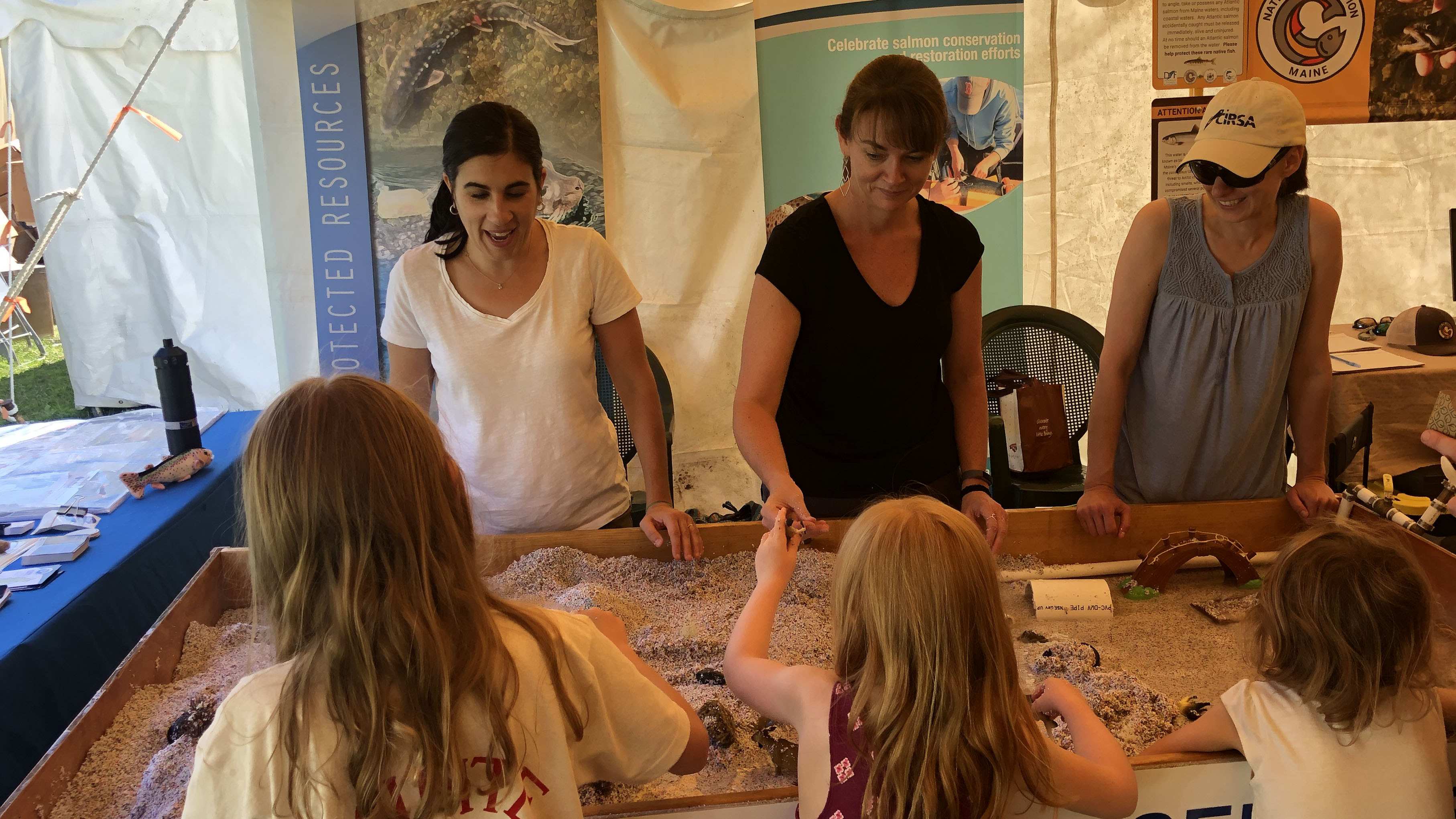
Atlantic salmon were once prevalent along the Eastern Seaboard, but habitat loss and other challenges have reduced their populations to a fraction of their former numbers. During the International Year of the Salmon, NOAA’s Greater Atlantic Regional Fisheries Office and Northeast Fisheries Science Center brought the challenges of fish passage to life for students in New England. The team designed a small-scale river model that can be taken directly into classrooms, allowing students to identify challenges such as dams, roads, habitat degradation and artificially created pools in the river. Students can also explore safe fish-passage solutions, such as dam bypass methods, for Atlantic salmon and other fish that migrate between stream and ocean. NOAA Fisheries staff brought this stream table to 17 different schools across Maine, reaching over 2,500 students. In addition, NOAA Fisheries collaborated with the educational tech app Agents of Discovery to launch Sea-Run, GO!, a game similar to Pokemon GO! that provides educational “missions” with unique geo-triggered “challenges” in which players learn about wild Atlantic salmon and other migratory fish that inhabit the rivers and coasts of New England.
Pacific Northwest: Tagging salmon to follow their migration to the ocean
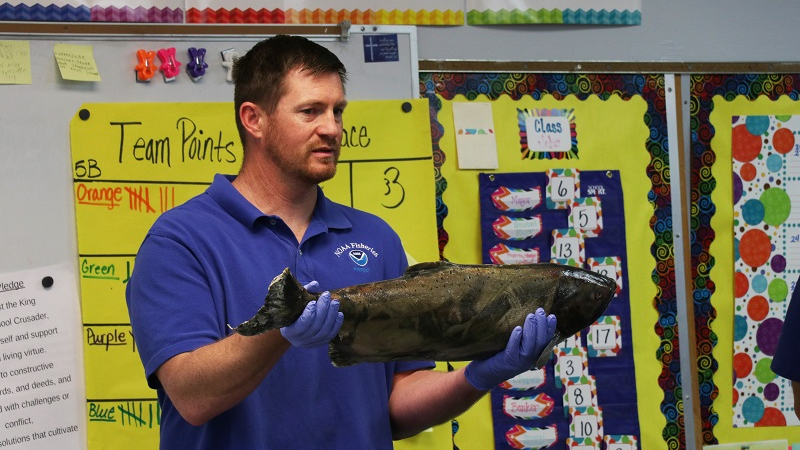
Every year, fourth and fifth grade students from dozens of schools in Benton County, Washington, raise salmon from egg to parr as part of a Salmon in the Classroom program. As a culminating event, the students release the young fish in April at the annual Salmon Summit in Pasco, Washington. During the International Year of the Salmon, more than 3,000 students released their salmon into the Columbia River. Scientists from NOAA Fisheries’ Pasco Research Station led fish dissections and hosted an interactive station during the summit. NOAA Fisheries scientists worked with students to insert Passive Integrated Transponder (PIT) tags into the biggest salmon prior to their release. These tags allowed the students to track the progress of their salmon’s downstream migration out to sea.
Matt Nesbit, NOAA Fisheries biologist, has been working with the Salmon in the Classroom program for the past five years, reaching many of the same teachers year after year. “The smiles and excitement shown by the students, either from talking to us about the salmon they are raising, asking questions during our classroom presentation, getting hands on during the salmon dissection or helping us PIT tag their fish at the Salmon Summit, it is almost indescribable,” Nesbit says. “We feel a great sense of service to the younger generations. In the few hours we share with these students, we are able to give them enough interesting information that we are able to pique their interest in the salmon that surround them. Our hope is that this interest will last a lifetime.”
Summer students study salmon in Idaho
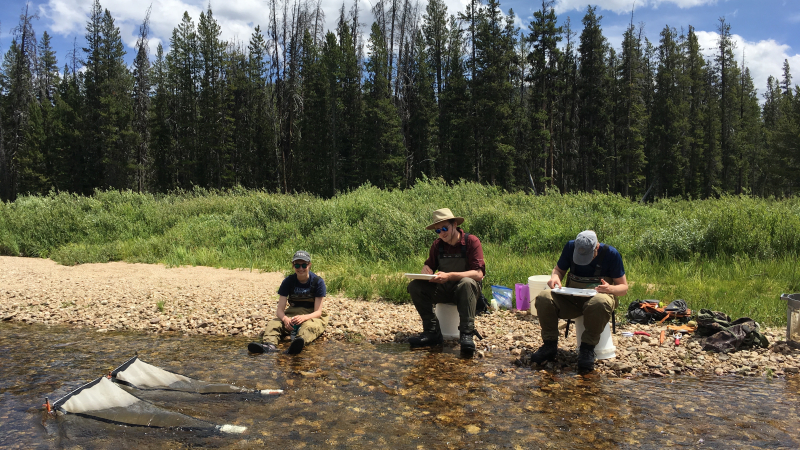
Salmon hatch in freshwater streams, migrate downstream to the ocean, and grow to adulthood in productive ocean waters. They later return to the same freshwater streams where they were born to spawn and die, providing much-needed nutrients to enrich the stream. During the International Year of the Salmon, three interns from NOAA’s College-Supported Internship Program spent part of their summer at the Northwest Fisheries Science Center, participating in a study that examines salmon carcasses as sources of nutrients to streams in the Salmon River Basin in Idaho. As part of the research field team, they traveled to remote areas of Idaho to help collect physical, biological, and chemical data from roughly seven streams, often camping in remote areas to access field sites. The Northwest Fisheries Science Center, with facilities in Washington, Idaho, and Oregon, supported 58 interns in 2019 for eight- to 10-week internships during the summer in addition to hosting high school and undergraduate interns during the school year.
Building salmon culture in California

In California, many people don’t realize there are salmon in their watershed. To support the International Year of the Salmon and begin building a salmon culture in California, NOAA Fisheries' West Coast Regional Office invited the youngest learners to learn about salmon through a series of educational resources for elementary school students. The series includes a children’s book, An Incredible Journey, available in English and Spanish; a salmon curriculum in English and Spanish; and a salmon board game: Salmon Survival in English and Supervivencia del Salmón in Spanish. The resources help students understand the cultural, economic, and environmental importance of salmon and how they can become salmon stewards. The book includes examples of students who are actively promoting actions to protect salmon, so that new readers will be inspired to become salmon stewards themselves. In 2019, the book and curriculum were distributed to more than 111 schools in Washington, Oregon, Idaho, and California.
Alaska student studies salmon through a Partnership Education Program Alaska internship
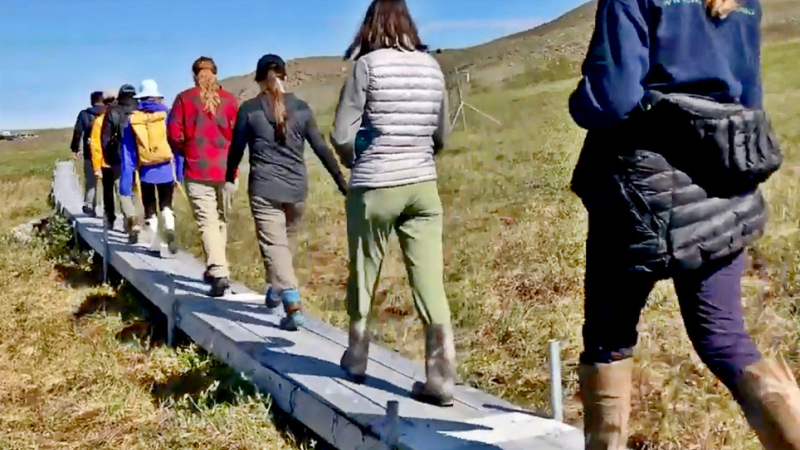
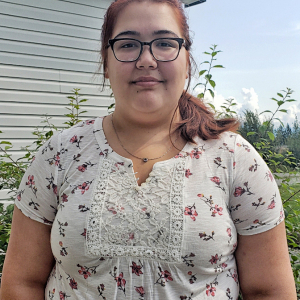
During the International Year of the Salmon, Summer Morse, a rising sophomore from the University of Alaska Anchorage, spent the summer as a Partnership Education Program Alaska (PEP AK) intern at NOAA Fisheries’ Auke Bay Laboratories in Juneau, Alaska. PEP AK is a marine workforce development program that recruits and trains students from underserved communities. During her internship, Morse gained hands-on experience operating permanent fish-counting structures at both the Auke Creek Research Station in Juneau and the Little Port Walter Marine Research Station on Baranof Island. Morse experienced a wide range of research, assisting with Pacific salmon identification, genetic sampling and sample management procedures, fish rearing and tagging, salmon scale sampling, and environmental data collection. She also gained skills in computer-based data analysis, compiling nearly 20 years of juvenile salmon data collected at Little Port Walter and summarizing trends in migration timing to explore potential shifts due to changing environmental conditions. “The shifts in smolt and steelhead adult migration timing and size could potentially be linked to environmental variables that have been recorded daily at Little Port Walter,” said Morse. Morse’s work can inform management decisions at local and regional scales and is critical to understanding the productivity of salmon populations in a changing climate — a worthy effort during the International Year of the Salmon!
NOAA Fisheries reaches out to Woods Hole schools and public through aquarium display and COAST program
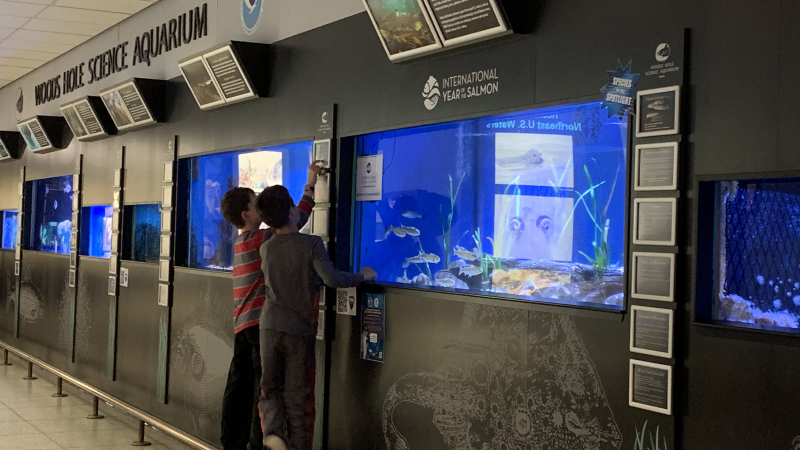
Atlantic salmon are listed as endangered on the East Coast, yet there is much to be done to raise awareness and promote conservation of this once-abundant fish. The Woods Hole Science Aquarium, which hosts approximately 80,000 visitors a year, including 10,000 children in school groups, highlighted the status of the endangered Atlantic salmon during the International Year of the Salmon, through the development of a new Atlantic salmon display in collaboration with the Northeast Fisheries Science Center (NEFSC), which acquired Atlantic salmon smolts for a new tank exhibit. The new exhibit was showcased at the annual Endangered Species Day in May 2019, where NEFSC and Woods Hole Sea Grant staff manned booths and engaged visitors.
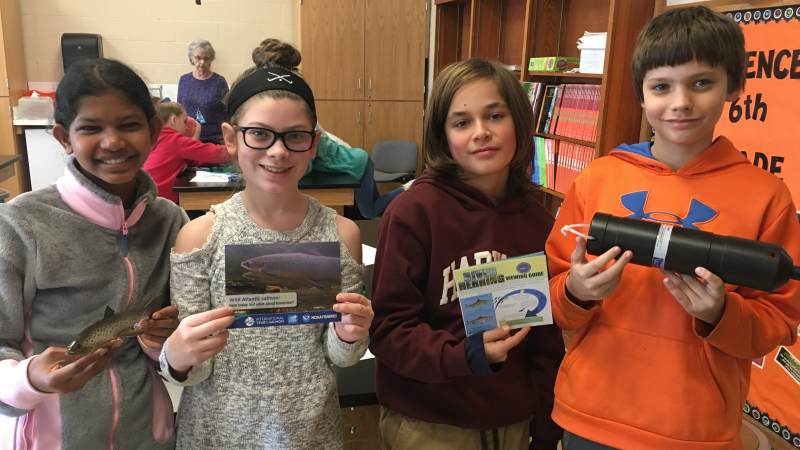
Middle school students learn about the challenges faced by Atlantic salmon smolts on their migration from stream to ocean.
Historically, Atlantic salmon were abundant in the northeastern United States, but they are currently at 1-5 percent of historical estimates. The Coasts, Oceans and Stewardship (COAST) Program offsite link, jointly funded by NEFSC and Woods Hole Sea Grant, worked with the NEFSC’s Northeast Salmon Team to create a new salmon curriculum to take to Woods Hole-area middle schools during the International Year of the Salmon. The COAST program creates educational materials about key marine and coastal research topics and conducts classroom visits with hands-on activities, presentations, and projects on for K-6 and middle school classrooms. During the salmon lesson, middle school students focus on the journey taken by the salmon smolts as they migrate downstream to the ocean, working with actual telemetry data to learn about challenges like dams and roads. Students also design a hydroelectric dam and bypass solution for salmon, discussing current solutions being used for these obstacles to salmon migration. COAST staff visited 34 classrooms, reaching 771 students and distributing International Year of the Salmon information to raise awareness of salmon issues. Local classrooms were also given the opportunity to adopt six river herring PIT tags and track them to follow their migration to the ocean.
This story was included in the Fiscal Year 2019 NOAA Education Accomplishments Report.


